Dire Straits' bassist John Illsley reveals why he swapped the recording studio for the art studio — and his consuming passions
John Illsley rose to fame as the bassist of the Dire Straits, but nowadays you're more likely to find him in an art studio.
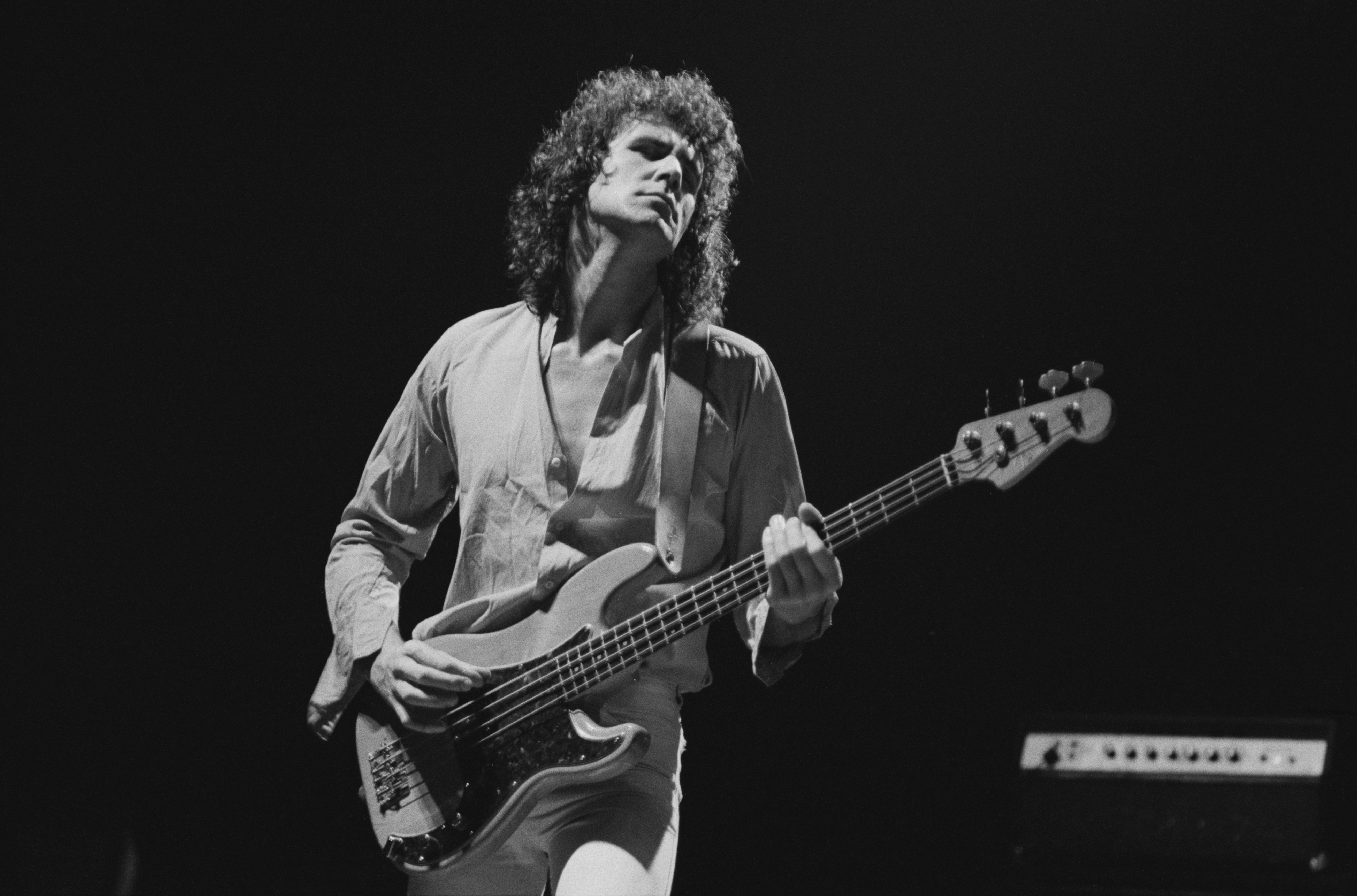

John Illsley’s art studio is a mess. There is paint everywhere: scattered haphazardly in tubes, dashed up the walls and, of course, on his many finished works.
There is, however, hiding in the corner of the room, a keyboard and a guitar. Despite embracing a second career as an artist, the former bassist and founding member of the rock band Dire Straits is unable to leave music behind entirely.
In fact, when we meet, it is in the run up to his upcoming tour, The Life and Times of Dire Straits, a homage to his time with the band which celebrates the 40th anniversary of their best-selling album, Brothers in Arms.
Now 76, John shows no signs of slowing down. In addition to painting and playing music, he is also a beekeeper, ‘The bees were a 70th birthday present,’ he says, gesturing to his beekeeping suit which is flung over the back of a chair in the corner of his studio.
The guitarist-cum-artist-cum-keeper-of-bees also owns a pub and restaurant, the East End Arms, in the New Forest, where he now lives with his wife and three dogs — black labrador Jeff, Portuguese podengo Bunny and little Dolly, the parson terrier.
He grew up in a little town just outside Leicester, called Market Harbour. ‘We had a very simple childhood, which was in the countryside,’ he recalls, over coffee around his dining room table in his impeccably stylish open-plan living room. His father was a local bank manager and his mother a housewife with four children. ‘It was a fairly strict, normal sort of upbringing in the 1950s when I think England was still recovering from the war a little bit.'
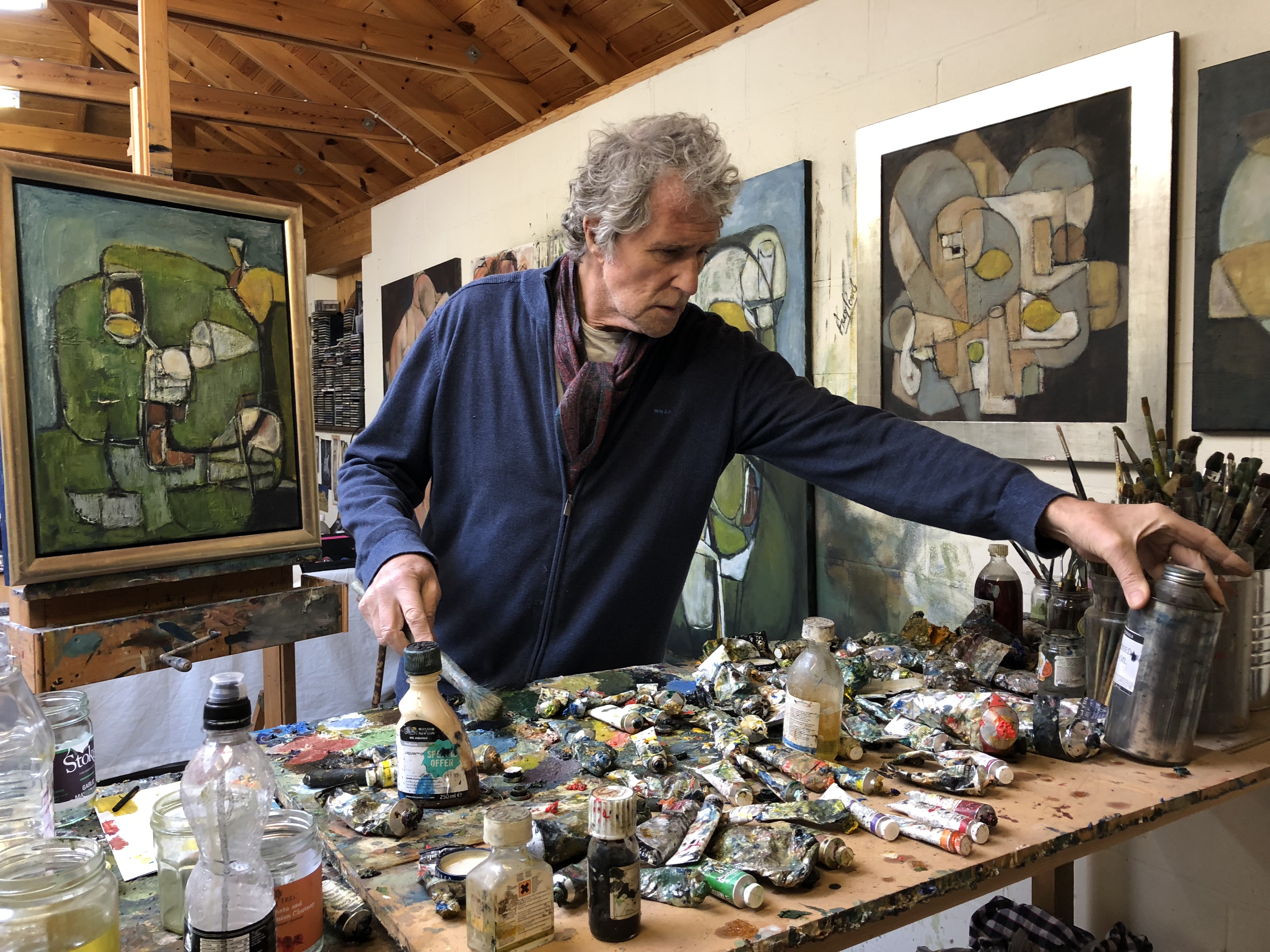
John at work in his studio.
‘Growing up, you didn't really know much about the outside world, because there was very little communication. You had the Nine O'Clock News, and then the TV turned off. We didn’t have much news apart from what we were fed by the BBC.’
Exquisite houses, the beauty of Nature, and how to get the most from your life, straight to your inbox.
What changed his world view was, aged around 11-12, the radio. On his brother’s crystal radio set the two boys managed to tune into Radio Luxembourg, and it altered the trajectory of John’s life. ‘They were playing music on there which I’d never heard before, and that’s what really excited me,’ he recalls. Tunes like Elvis Presley’s Heartbreak Hotel and Chuck Berry’s Rollover Beethoven struck a chord, and from that point onwards dragging the young musician away from instruments became the unfortunate challenge of his parents and schoolmaster. ‘I can’t stop John playing this infernal banjo,’ read one letter from the latter to the former. ‘He won’t stop, even if I keep taking it away from him and into my study, he finds one somewhere else.’ His schoolwork suffered, but John was undeterred.
His first guitar was a Rosetti Lucky 7 and its cost him all of his pocket money. ‘I discovered many years later that that was the first guitar that George Harrison had,’ he says. ‘It was a terrible thing, almost impossible to play.’ But play, he did, and when his brother formed a school band with no vacancy except for a bass guitarist, he taught himself to play that too.
He left school with ‘not much apart from art A-level'. His mother and father ‘got pretty fed up with me sitting in the kitchen with my friends, smoking and drinking coffee all day,’ and so he was obliged to get a ‘proper job’ — as a timber importer, in Bexleyheath, for three years. ‘I kind of enjoyed it. It really opened my eyes, because living in a middle class household in the middle of the countryside in Leicestershire you didn't really know much about other people.’
John subsequently decided to do a degree in Sociology at Goldsmiths College in London, and lived in a council flat in Deptford. He saved on the rent by enlisting a roommate: David Knopfler, the brother of Mark Knopfler — who went on to become the frontman of the Dire Straits.
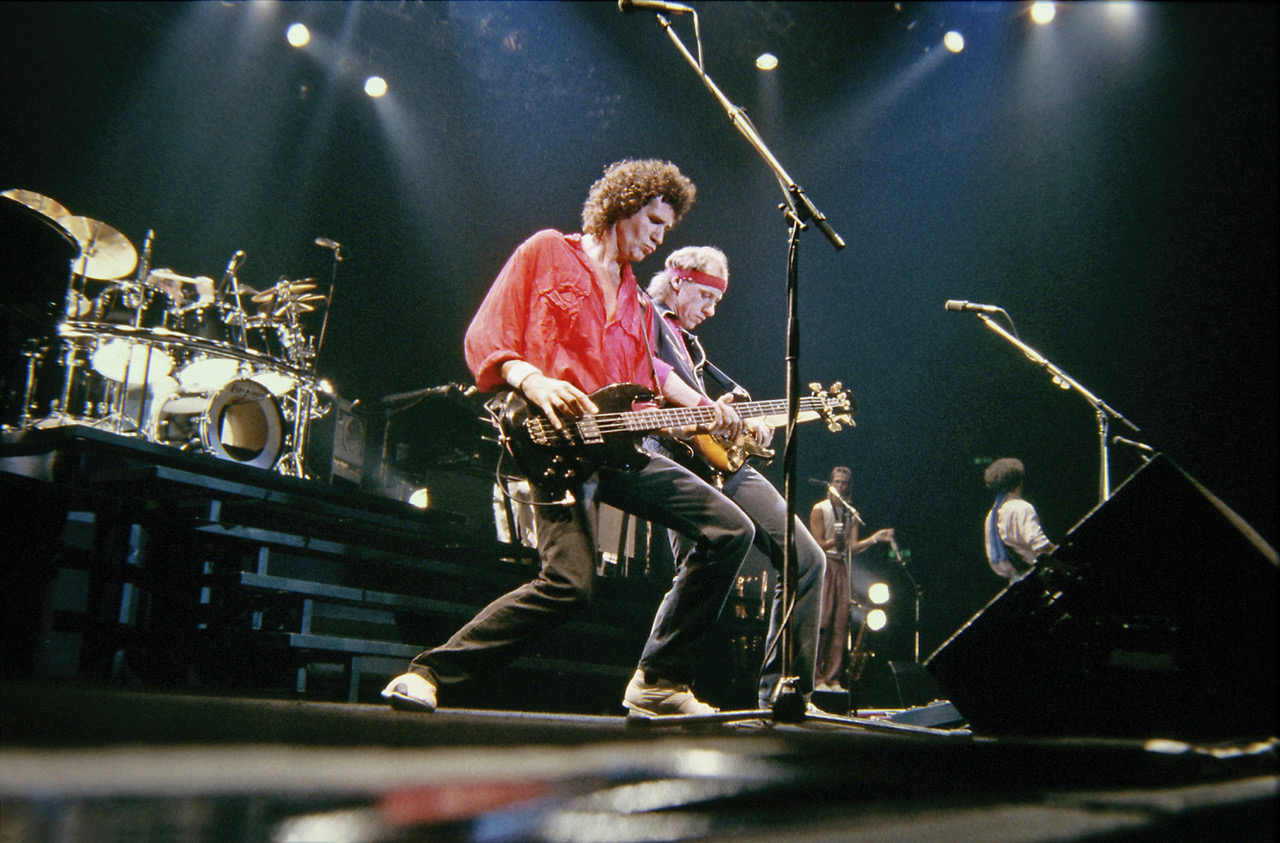
John in 1985 playing Wembley Arena with the Dire Straits.
‘I’d played with a lot of bands up to this point, and nothing really happened, but suddenly I sat down with Mark, and I thought, this is different. I really felt this was going to be something.’
They played their first gig under a different name: the Cafe Racers. It took place at a punk festival, on a patch of grass between their flat and the railway line and the pair had to run the electricity from the flat to the stage. ‘We were in dire straits,' says John. 'We were literally doing gigs for £20 and a pint of beer, and the PA system was costing us £15 to get in.'
When his grandmother died he inherited £500 and the band convinced him to spend it on their demo tape. A song — Sultans of Swing — aired on DJ Charlie Gillett's Sunday radio show and later broke into the top ten in the UK and US charts. Other hits such as Money for Nothing and Walk of Life soon followed. Their 1985 album, Brothers in Arms, has sold more than 30 million copies worldwide and is the eighth best-selling album in this country's history. ‘I look back at all the gigs we were doing and wondered, “How on earth did we do all that?”. The workload was crazy, and we never stopped. We had a few breaks, you know, in the 1980s, but we didn't really stop until 1992.’
After the band broke up, John put down the bass guitar and picked up a paint brush. ‘I dedicated myself completely to painting,’ he says. He has had shows in galleries in London, Sydney and New York; his style is distinctive and colourful, much of it abstract — though guitars creep in from time to time.
He recently donated a piece to a Woolley and Wallis auction (October 26), to help raise money for the charity Horatio's Garden. Now the two hobbies compete for his time — but apart from art and music, I wanted to know... what else drives John.
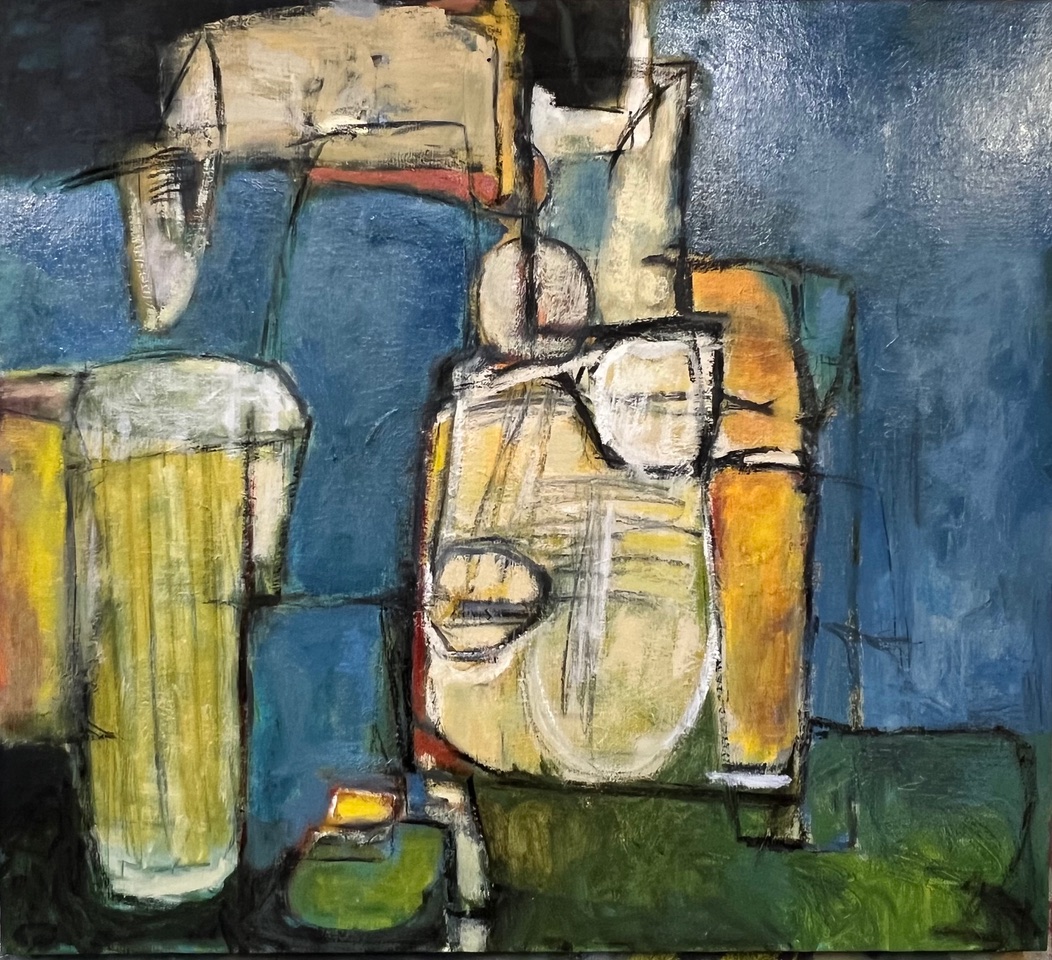
'Coast IV' by John Illsley.
Your aesthetic hero
Musically, heroes wise, there’s so many of them, but I would probably put Bob Dylan at the top of that list, followed by Lennon Cohen, followed by Van Morrison. And from a painting point of view, Picasso’s the master.
An exhibition that has really impressed you
Probably the very first one I saw with my art master in 1967. It was the Pierre Bonnard exhibition at, I think it was the Royal Academy, he took a train load of us. It really opened my eyes to how to look at a picture, the way he talked about them.
What’s the last thing of note you bought yourself?
This sounds very mundane, but a pair of trainers from the company that Roger Federer started. They’re just amazing, I have four or five pairs and I live in them. The great thing about them is they have no laces — it’s total genius.
Your favourite painting
Pink Angels by Willem de Koonig, but I mean anything by Picasso from the rose period or the blue period is also up there.
A photo posted by on
A possession you would never sell
I would never sell my 1961 Fender Jazz Bass guitar, which has been with me for 45 years and which I haven’t changed the strings on in 25 years. That’s the one I use to record with. That will be with me forever.
A book you’ve found inspiring
There’s two — The Glass Bead Game by Hermann Hesse and Any Human Heart by William Boyd.
The music you work to
In my art studio it can vary from Rachmaninoff’s Second Piano Concerto in C minor to The Beatles, the Rolling Stones or ZZ Top and anything in between.
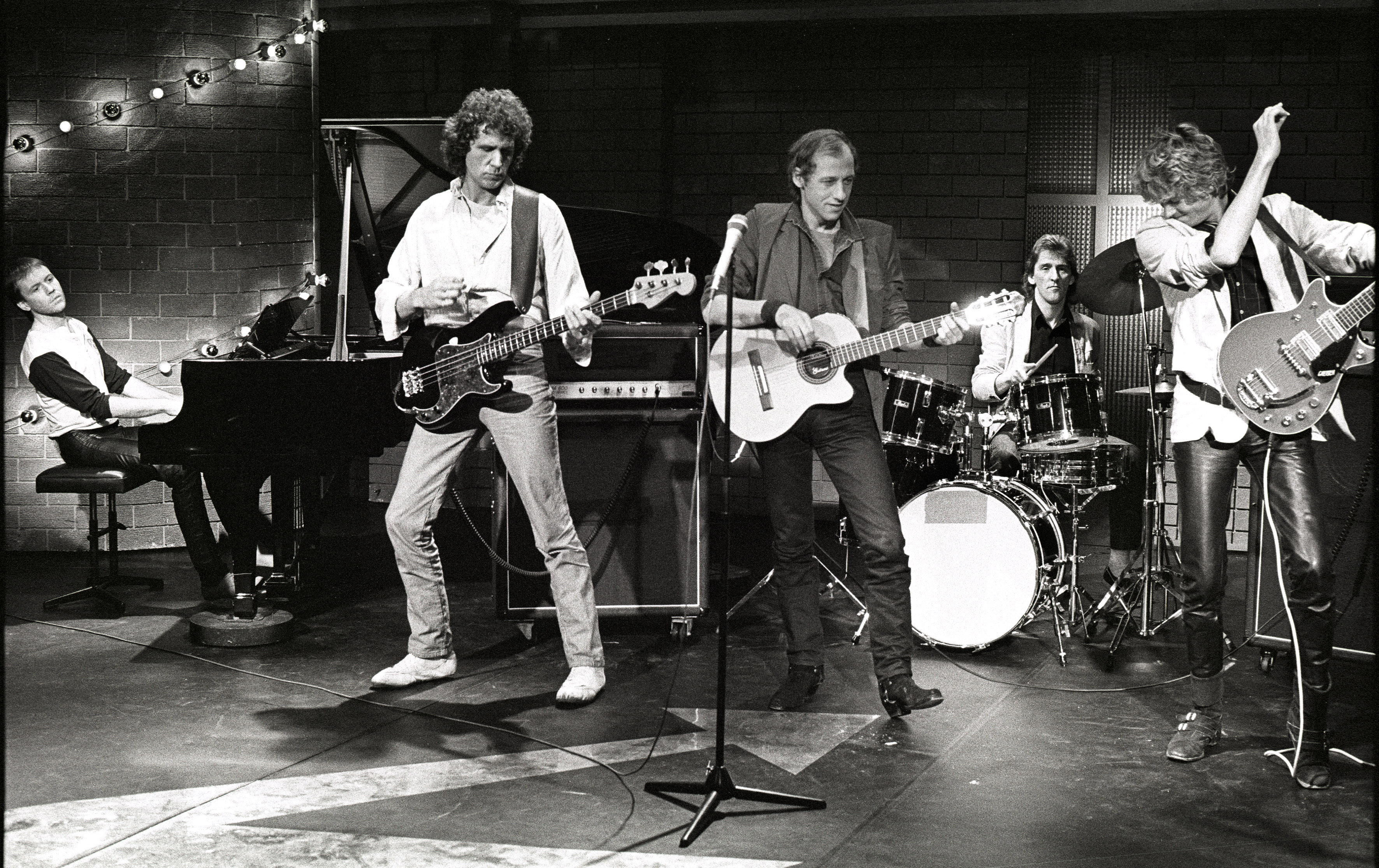
John with the Dire Straits in 1982.
The last podcast you listened to
We usually listen to The Rest is Politics with Rory Stewart and Alistair Campbell, they were talking about the Gaza peace deal and its potential or survival or not — that was the last one I listened to.
The person that would play you in a film of your life
Well, the funny thing is, if I ever get recognised, I often get recognised as Bill Nighy, and taxi drivers say, ‘All right, Bill' and I think, ‘I know what you're thinking but I am not him’. But he has this condition with his hands, so he’d never be able to play the bass like I do. So not him. You would need someone at least over six foot and… you know… good looking.
What you'd take with you to a desert island
I’d take a guitar with me. Actually, I’d probably take a box of paints.
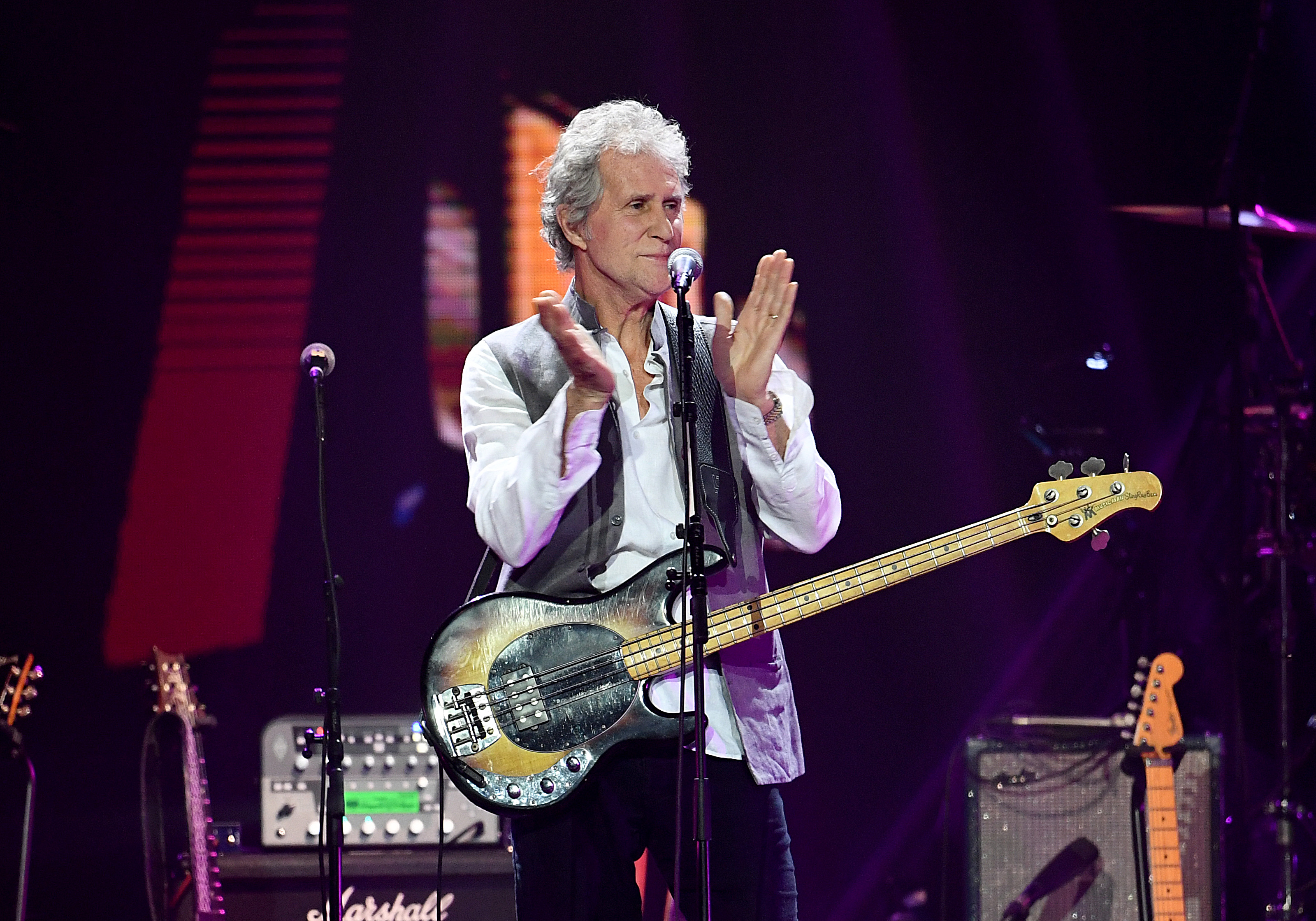
John on stage during Music For The Marsden 2020 at The O2 Arena.
What gets you up in the morning
Usually the dogs I need to walk. I never get up later than 7am most mornings.
Anything you collect
I collect paintings. I love buying them. I’ve probably got too many, and I should stop as we’ve got no room left and they’re stacking up a bit.
A hotel you could go back and back to
The Sanders hotel in Copenhagen.
The most memorable meal you’ve ever had
Probably recently in Copenhagen at this place called The Pescetarian. It’s the most extraordinary restaurant. It is ridiculously expensive, but the food is just extraordinary.
The best present you’ve ever received
Recently, my wife bought me the most beautiful painting by an Irish painter called Diarmuid Kelly, it is a picture of an apple. It’s tiny. We went to the exhibition, and I was looking around, thinking, ‘I might buy one of these pictures,’ and I got to this apple, I thought, ‘I'm going to buy that,’ and there was a sticker on it already. ‘That’s really annoying,' I thought. 'This is really the one I wanted, 'and it was my wife who had put the sticker on before I could get to it, because she just knew that would be the one that I’d want.
John is among 70 artists donating works to raise funds for the charity Horatio’s Garden. The online auction at Woolley and Wallis auctioneers is on until October 26.
Lotte is Country Life's digital writer. Before joining in 2025, she was checking commas and writing news headlines for The Times and The Sunday Times as a sub-editor. She has written for The Times, New Statesman, The Fence and Spectator World. She pens Country Life Online's arts and culture interview series, Consuming Passions.
-
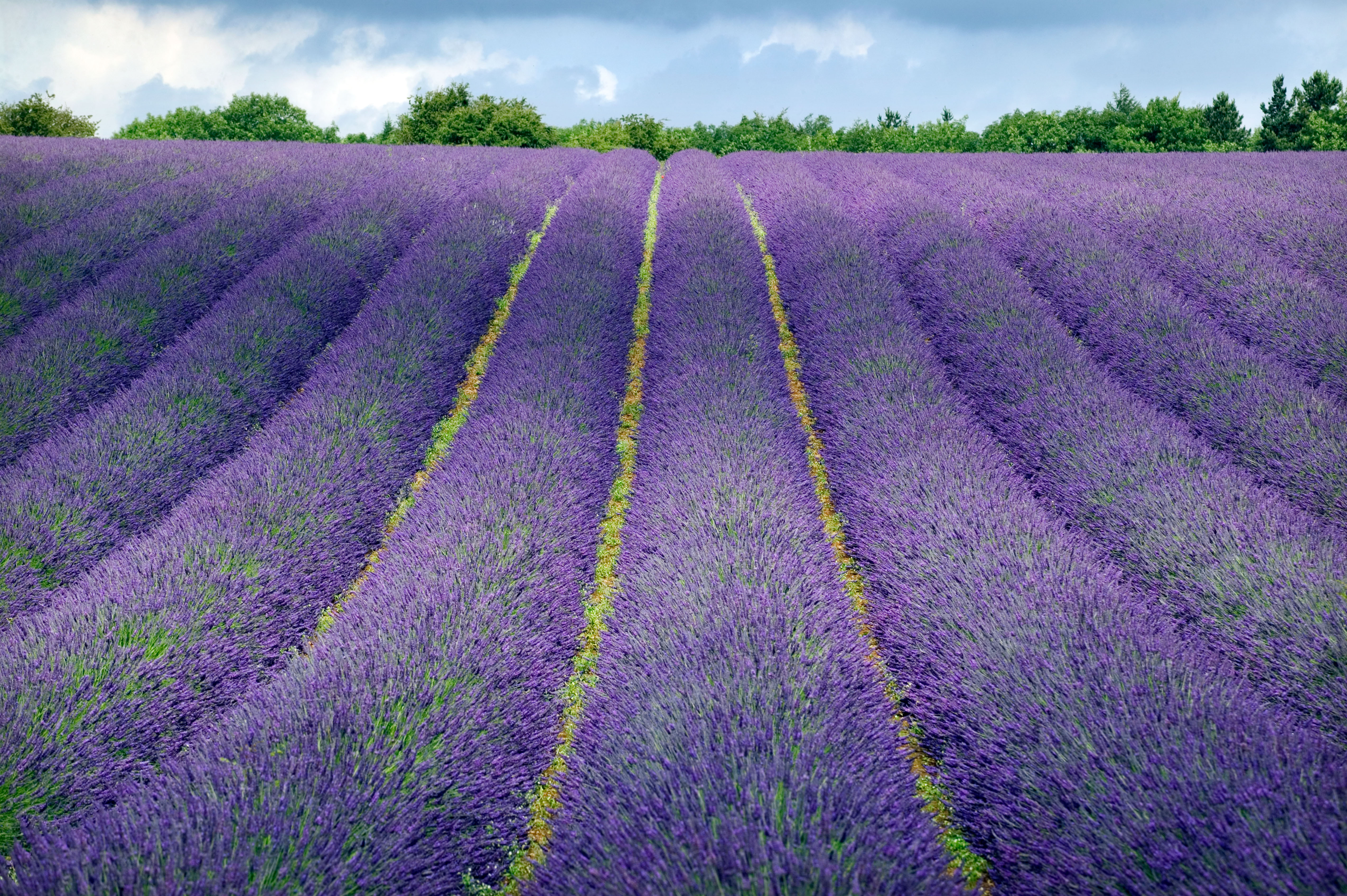 Meet the British perfumers squeezing landscapes into scents
Meet the British perfumers squeezing landscapes into scentsThe nuances of modern perfumery now allow a single drop to evoke an entire landscape. Amie Elizabeth White explores the native houses hitting the right notes
-
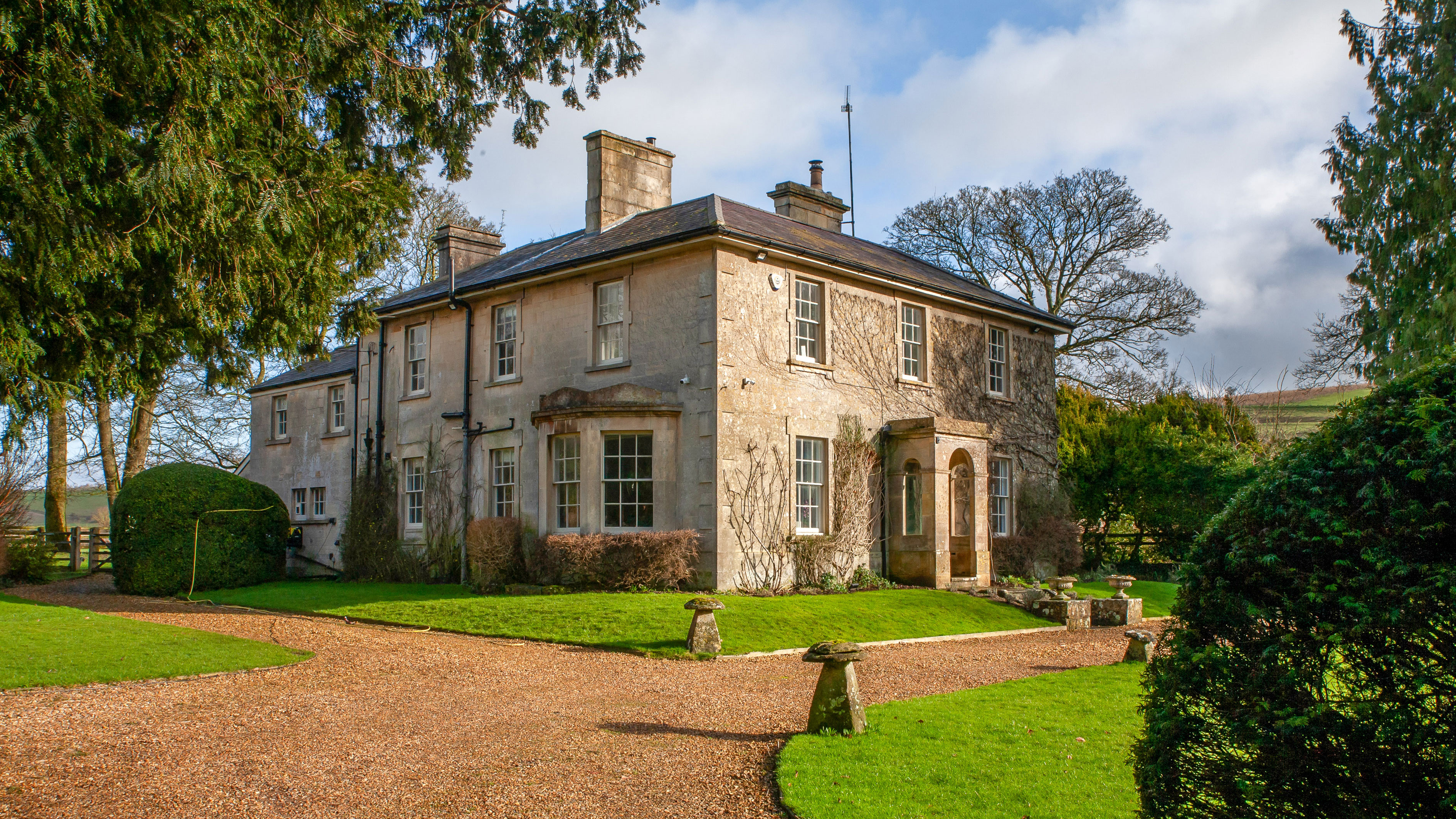 A Georgian farmhouse that's an 'absolute gem' in an ancient village on Salisbury Plain
A Georgian farmhouse that's an 'absolute gem' in an ancient village on Salisbury PlainJulie Harding takes a look at the beautiful West Farm in a gorgeous Wiltshire village.
-
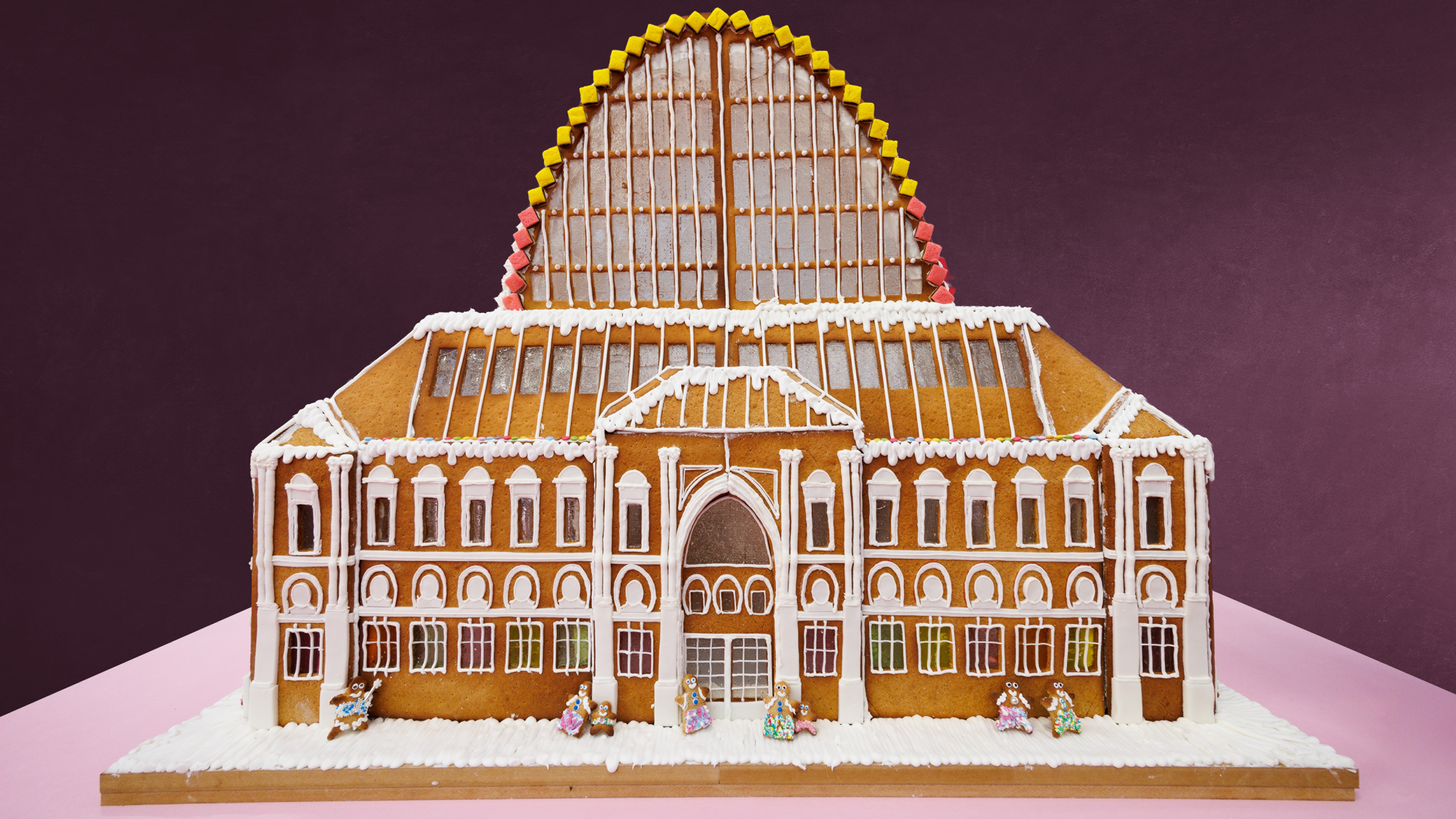 Sweet civilisation: What do you get when you ask architects to compete in a gingerbread competition?
Sweet civilisation: What do you get when you ask architects to compete in a gingerbread competition?The Gingerbread City is back in London’s Kings Cross. Lotte Brundle pays it a visit.
-
 Sophia Money-Coutts: A snob's guide to meeting your in-laws for the first time
Sophia Money-Coutts: A snob's guide to meeting your in-laws for the first timeThere's little more daunting than meeting your (future) in-laws for the first time. Here's how to make the right kind of impression.
-
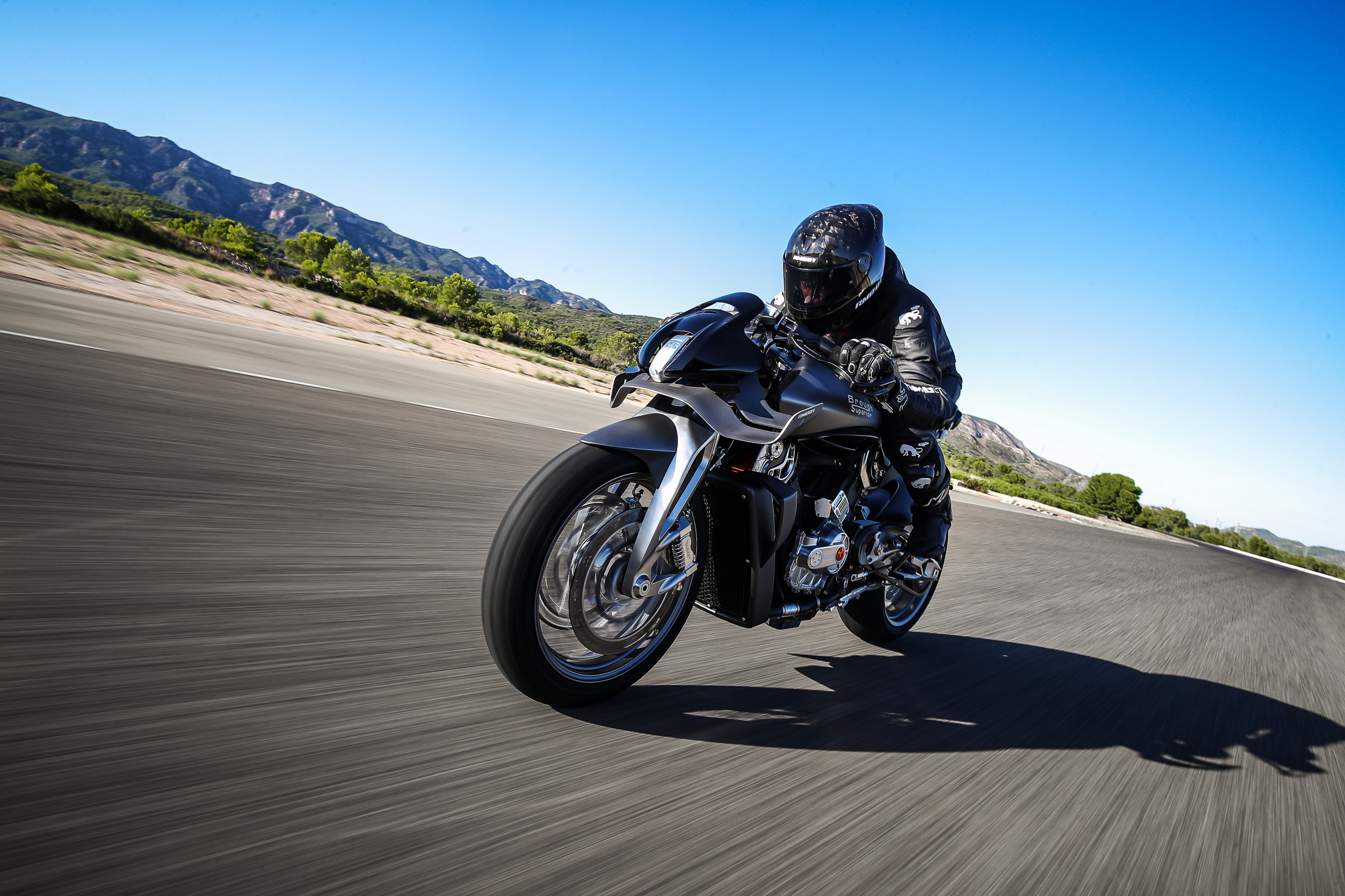 This machine is what happens when the Rolls-Royce of motorbikes and the most innovative of watchmakers join forces
This machine is what happens when the Rolls-Royce of motorbikes and the most innovative of watchmakers join forcesBrough Superior and Richard Mille, two brands renowned for perfection, have created something that is exactly that.
-
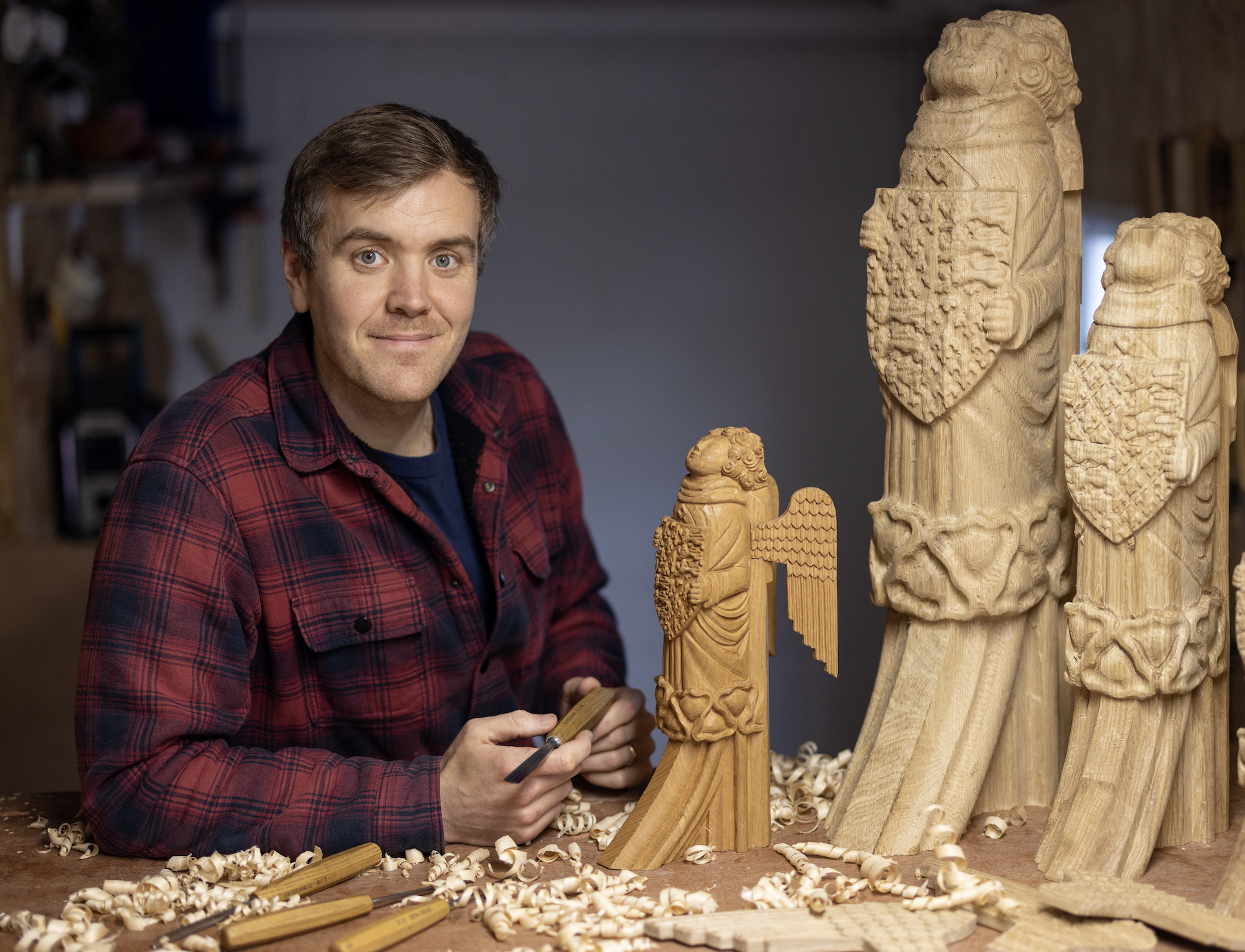 ‘Each one is different depending on what mood I’m in, how I'm feeling and how my energy is’ — meet the carver behind Westminster Hall's angel statues
‘Each one is different depending on what mood I’m in, how I'm feeling and how my energy is’ — meet the carver behind Westminster Hall's angel statuesBespoke woodcarver William Barsley makes unique scale replicas of the angels that gaze over Westminster Hall, the oldest part of the palace of Westminster.
-
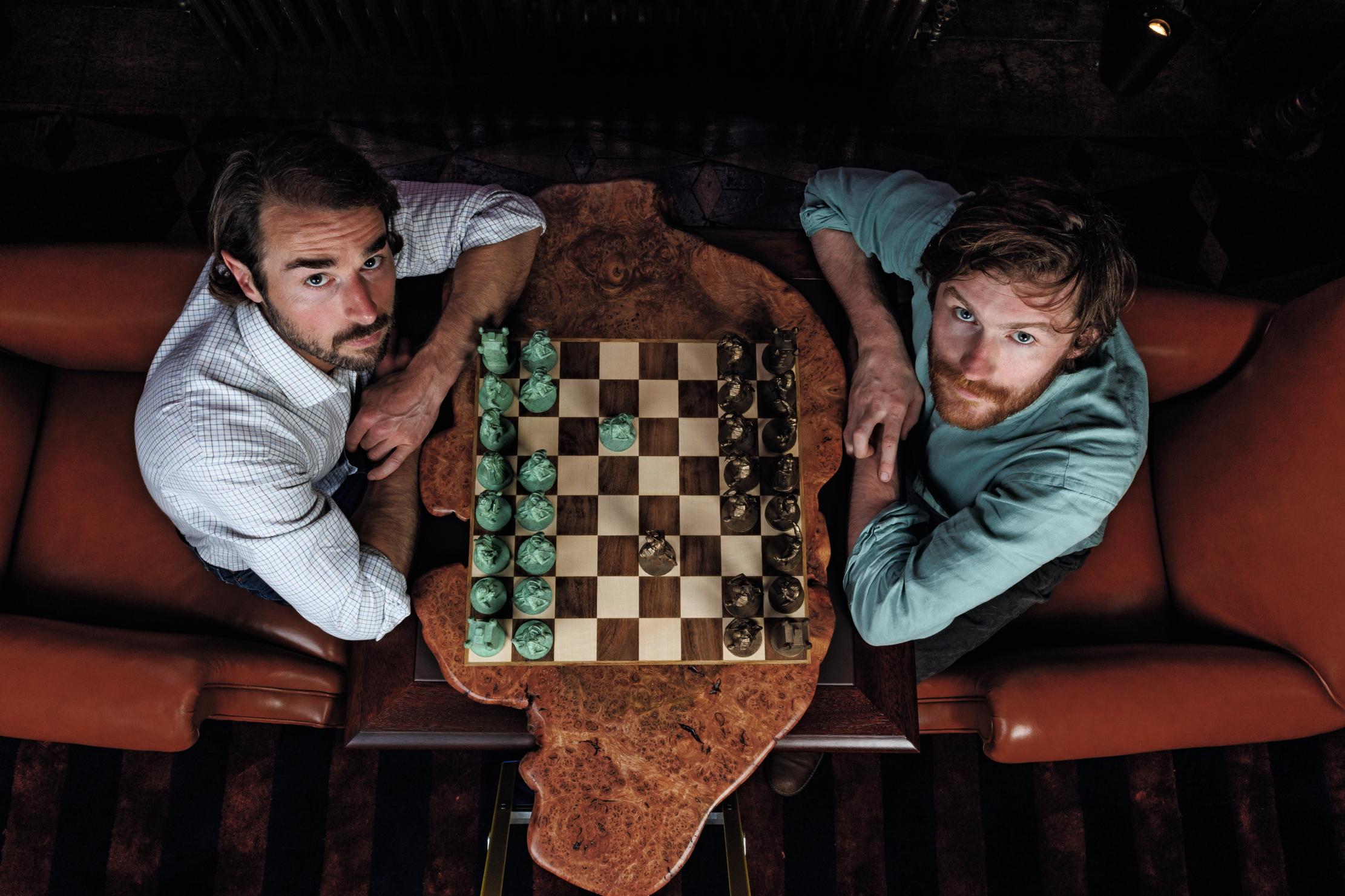 If chess is 'the supreme board game', then it deserves to be played on boards like these
If chess is 'the supreme board game', then it deserves to be played on boards like theseChess sets and backgammon boards are a familiar sight on drawing-room tables, but one expert Highland woodworker is refashioning their forms in beautiful new ways.
-
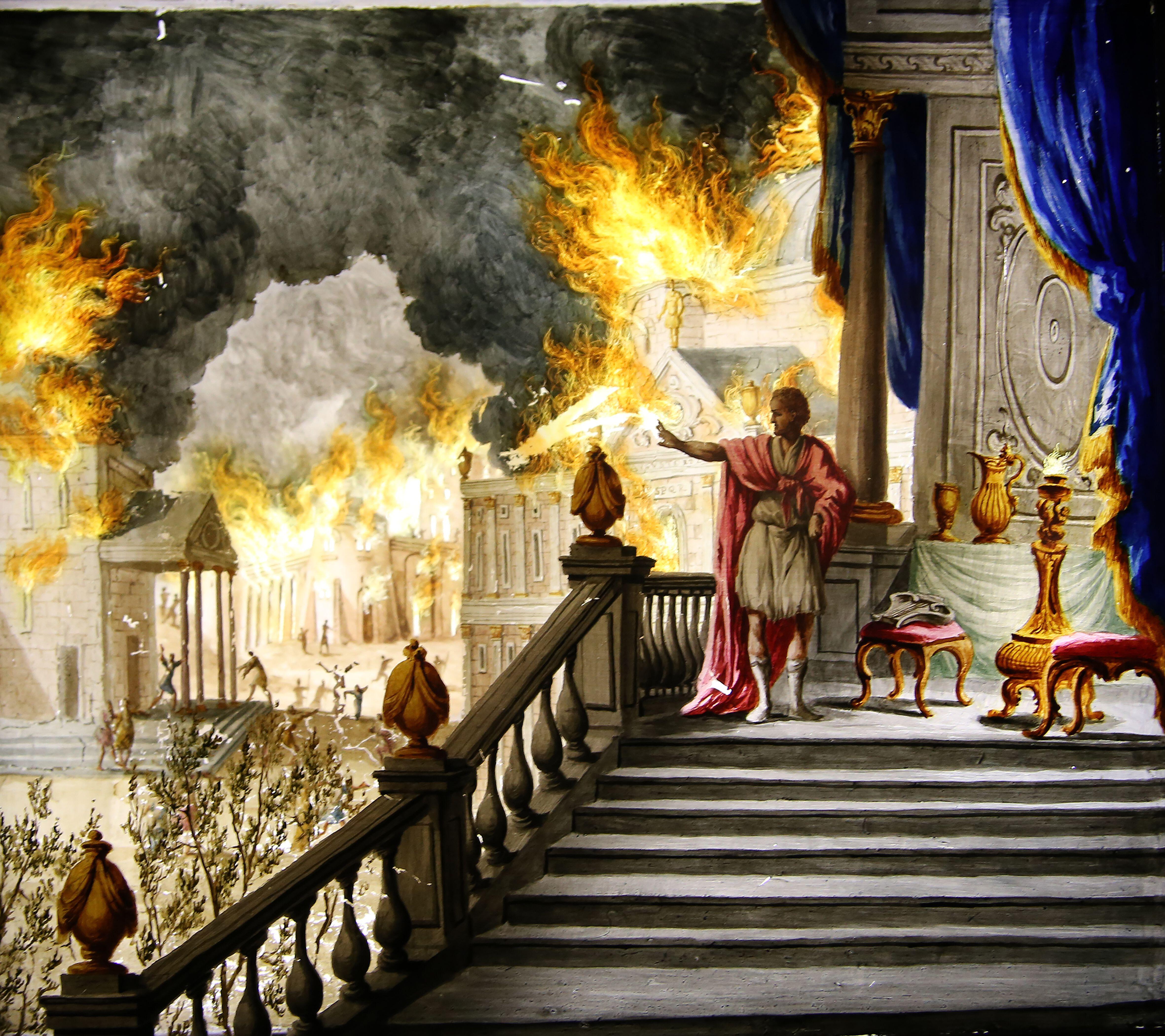 What is everyone talking about this week: Thanks to modern-day technology, people were far happier in the days when Nero was setting Rome ablaze
What is everyone talking about this week: Thanks to modern-day technology, people were far happier in the days when Nero was setting Rome ablazeWas the ancient world's superior happiness down to its ‘superior production of art’?
-
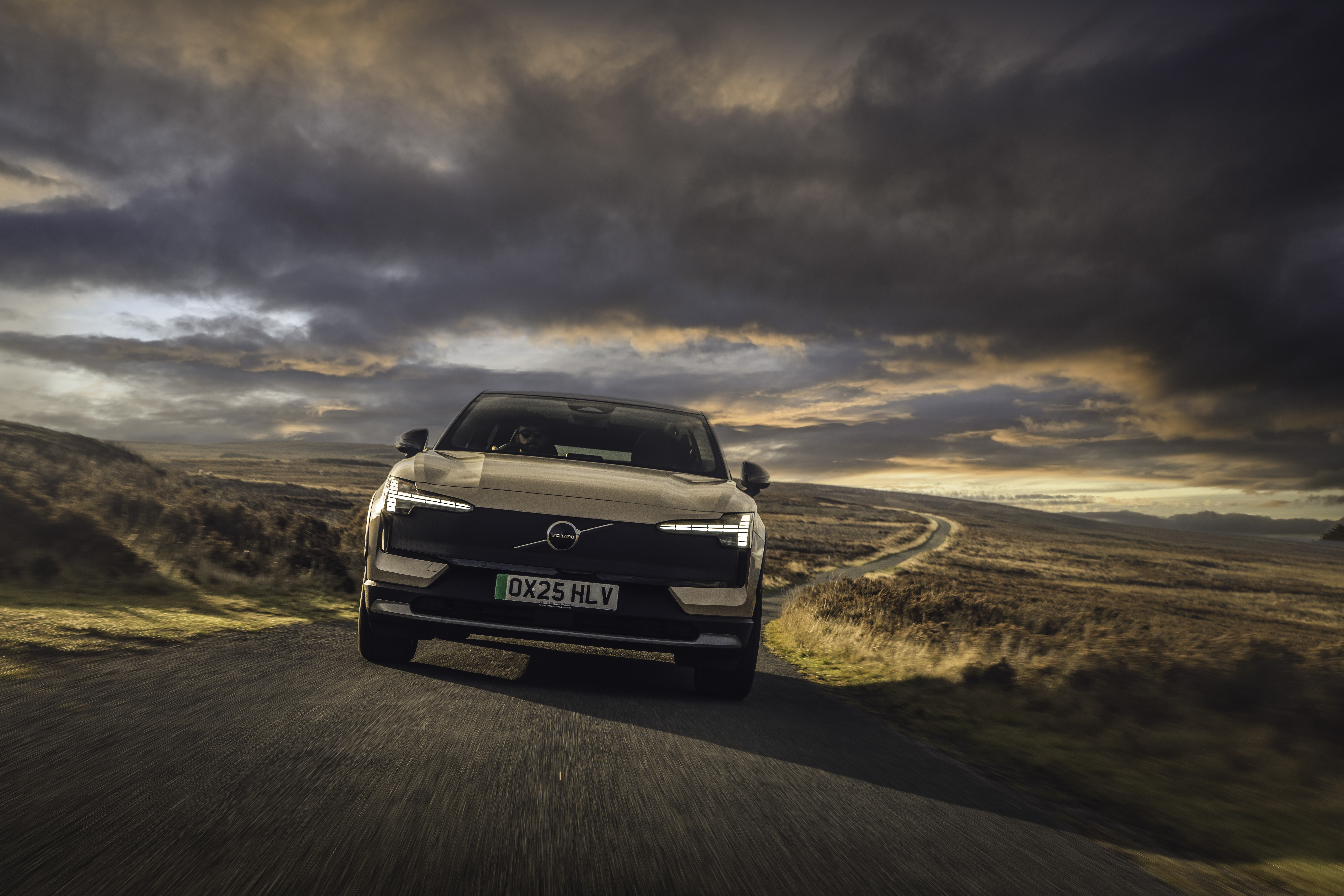 A slick looking off-roader that's a far cry from its rustic rural roots — Volvo EX30 Cross Country
A slick looking off-roader that's a far cry from its rustic rural roots — Volvo EX30 Cross CountryThe latest iteration of Volvo's Cross Country is flashy, fast and stylish. But is that what a Volvo Cross Country is supposed to be?
-
 ‘I cannot bring myself to believe that Emily Brontë would be turning over in her grave at the idea of Jacob Elordi tightening breathless Barbie’s corset’: In defence of radical adaptations
‘I cannot bring myself to believe that Emily Brontë would be turning over in her grave at the idea of Jacob Elordi tightening breathless Barbie’s corset’: In defence of radical adaptationsA trailer for the upcoming adaptation of 'Wuthering Heights' has left half of Britain clutching their pearls. What's the fuss, questions Laura Kay, who argues in defence of radical adaptations of classic literature.
